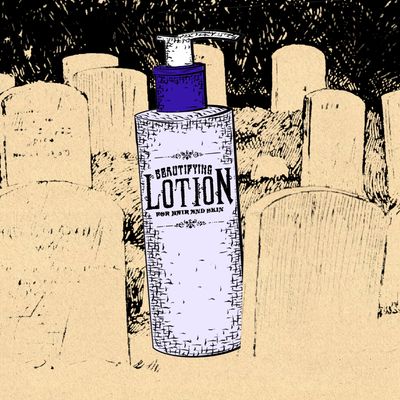
Perhaps you tried it and didn’t like it or bought it on sale and forgot about it. Either way, now you have a bottle of lotion that has been gathering dust in your bathroom cabinet for what feels like a little too long. But how long exactly is too long? Does lotion actually expire? And how can you tell whether a lotion has gone bad?
Once you open a bottle of lotion, the clock starts ticking
Most lotions will have an expiration date printed on the bottle, though it’s just a general guideline and not a hard-and-fast rule. According to Dr. Hope Mitchell of Mitchell Dermatology, the longevity of lotion depends on a confluence of factors, including its formula, storage conditions, and whether it’s sealed or unsealed.
Unopened lotions will often last two to three years when stored in a cool, dry place away from direct sunlight. Once a lotion is opened, its shelf life shortens significantly, usually lasting six months to a year. “This is because exposure to air and contaminants can lead to oxidation and microbial growth, which may compromise the efficacy and safety of the product over time,” Mitchell explains.
Although it’s not currently an industry requirement, many brands choose to include a symbol on the packaging that resembles an open jar along with a number such as 6M, 12M, or 24M — that indicates how many months a product will last after it has been opened, also known as period after opening (PAO). Board-certified dermatologist Dr. Marisa Garshick often advises her patients to write the date they opened a product on its packaging so they can keep track of how long it’s been on their shelf.
Ingredients also play a part in how long lotion will last
Many lotion formulations contain preservatives such as parabens and phenoxyethanol to ensure they’ll remain fresh and germ free for as long as possible. However, there are some exceptions that will have a shorter shelf life by default. These include “natural” or “organic” products that don’t contain stabilizers and preservatives, and formulas that include active ingredients such as hyaluronic acid or vitamin C. Both are relatively unstable ingredients that will quickly lose potency when exposed to light, heat, and oxygen, so those products usually have reduced life spans with a maximum of about a year.
Changes in color or texture are a bad sign
If you notice any changes in a lotion’s color, consistency, or odor, these may indicate that it’s time to throw it out. “If your lotion has shifted to a darker hue, appears cloudy, or shows any unusual discoloration, it’s a clear indicator that something may be amiss,” says Mitchell. A darker or yellowing shade might indicate that time or exposure to light has caused the ingredients to degrade.
Texture is another important clue; watch out for thickness, clumpiness, or separation of oil and water components. “Especially if it’s in a pump bottle, you’ll see clear liquid come out before the lotion, and that means it’s separated and no longer good,” advises board-certified dermatologist Dr. Carmen Castilla. And finally, any strange or unpleasant odors are definitely a warning sign, as they could signal bacterial growth or spoilage.
Preservationwise, pumps and tubes are better than tubs and jars
Packaging can make a big difference in keeping lotion fresh and preventing contamination. Pump bottles are generally regarded as the most hygienic option because they reduce air and bacteria exposure, and there is minimal contact between the product and your hands. Squeeze tubes are also fairly decent for preserving the lotion’s integrity. Lotions in tubs or jars, meanwhile, are a lot more susceptible to contamination since you dip your fingers into the product, increasing the risk of introducing bacteria and other impurities.
Lotion formulas are generally developed with the type of packaging in mind, so a product destined for a tub may contain extra preservatives or other ingredients to inhibit bacterial growth. However, it’s always prudent to practice good hygiene by using clean hands or tools like a scoop or spatula if your lotion is packaged in a tub or jar.
What’s the worst that can happen if I use expired lotion?
Lotion that has expired won’t damage your skin per se, but it likely won’t be supereffective, so you won’t get the same soothing, hydrating, or brightening benefits as you would with a fresh bottle. The worst-case scenario, according to board-certified dermatologist Dr. David Kim, is that the formula may become irritating to the skin, causing a condition called contact dermatitis, “where your skin reacts to the product, gets inflamed, and develops dry, scaly patches.” If you experience any adverse reactions like irritation, redness, itching, or a burning sensation after applying any skin-care product, you should immediately stop using it.
Some lotions we like
The Strategist is designed to surface the most useful, expert recommendations for things to buy across the vast e-commerce landscape. Some of our latest conquests include the best acne treatments, rolling luggage, pillows for side sleepers, natural anxiety remedies, and bath towels. We update links when possible, but note that deals can expire and all prices are subject to change.









